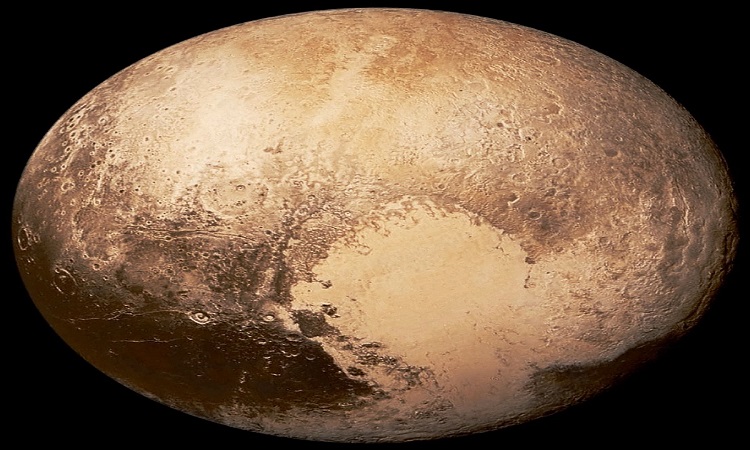On July 14, 2015, the US probe New Horizons approached Pluto within 12,500 kilometers, capturing incredible views of the most famous of the dwarf planets.
Demoted and reclassified as a dwarf planet since 2006, Pluto (2,372 km in diameter) and its moon Charon evolve more than six billion kilometers from Earth. The same year, NASA decided to launch New Horizons which, on July 14, 2015, became the very first probe to cross the Plutonian system.
The former ninth planet in the solar system then revealed itself to the world, astonishing researchers. On the reworked photos, captured by the probe, a bewildering diversity and complexity of terrain emerged.
“I was stunned,” one of the main players in this mission, Alan Stern, of the Southwest Research Institute in Boulder, Colorado, told Space.com. “It’s an amazing world – more than we could have imagined.”
During this interview, the researcher reviewed some of his favorite shots of the largest dwarf planet in the solar system.
The famous “heart” of Pluto
The left lobe (Sputnik Planitia), seen below, is a nitrogen ice glacier 1,000 kilometers in diameter. According to some models, a partially liquid ocean could even be hiding below the surface. How is that possible, so far from the Sun?
According to recent simulations, this ocean could actually be “capped” with a layer of gas. In other words, there would be gas (probably methane) sandwiched between the icy surface and the underground ocean, thereby isolating the two parts.
“This vast Pluto nitrogen glacier, Sputnik [Planitia], is among the most amazing terrain in the solar system,” continues the researcher. If you look closely, you will not see any craters, which means that he is very young. Take a closer look, and you’ll even see traces of ice convection, glacial flows, avalanches, wind trails… and even dune fields! ”
The hidden face of Pluto
“This face of Pluto was only seen in the low resolution images because the planet only spins once every six days on itself, and we were still millions of miles away when this side came off. presented to us ”, explains the researcher.
We then discover a completely different terrain from the hemisphere seen above. What justify a new overview? Alan Stern is not against it.
Blue sky
Pluto’s atmosphere is captured below in backlight by the probe’s Ralph Instrument MVIC multispectral camera. Colors have been reworked to look pretty much what a human eye would have seen. According to the researchers, this blue color comes from dust made of tholines, very reactive molecules containing carbon and nitrogen.
“I love this image not only for Pluto’s blue sky, which looks like Earth’s, but also for the fact that it was taken after we passed over Pluto. We then reached a goal that many thought was unattainable! ”
Misty terrain
“This magnificent image reveals both the ruggedness of Pluto’s terrain and the dozens of layers of atmospheric haze it sports, stretching to orbital altitudes, just that! ”
Face marked
“Although some parts of Pluto have no craters, which means they are geologically young, other parts are older, battered for over 4 billion years.”
Since the capture of these photos, New horizons has come a long way. Now placed more than seven billion kilometers from Earth, the probe is now so far away that some stars even appear to it in different positions, compared to our point of view.
One day, she will finally join the two spacecraft Voyager 1 and Voyager 2 in interstellar space.

Email: mary@satprwire.com Phone: +44 20 4732 1986
Marry is a fitness freak in every manner and gives proper care about her health and of others. She is probably the best person we have at Daily Research News for covering articles from the Health sector. If not at work, she can be seen drinking a cup of coffee.


